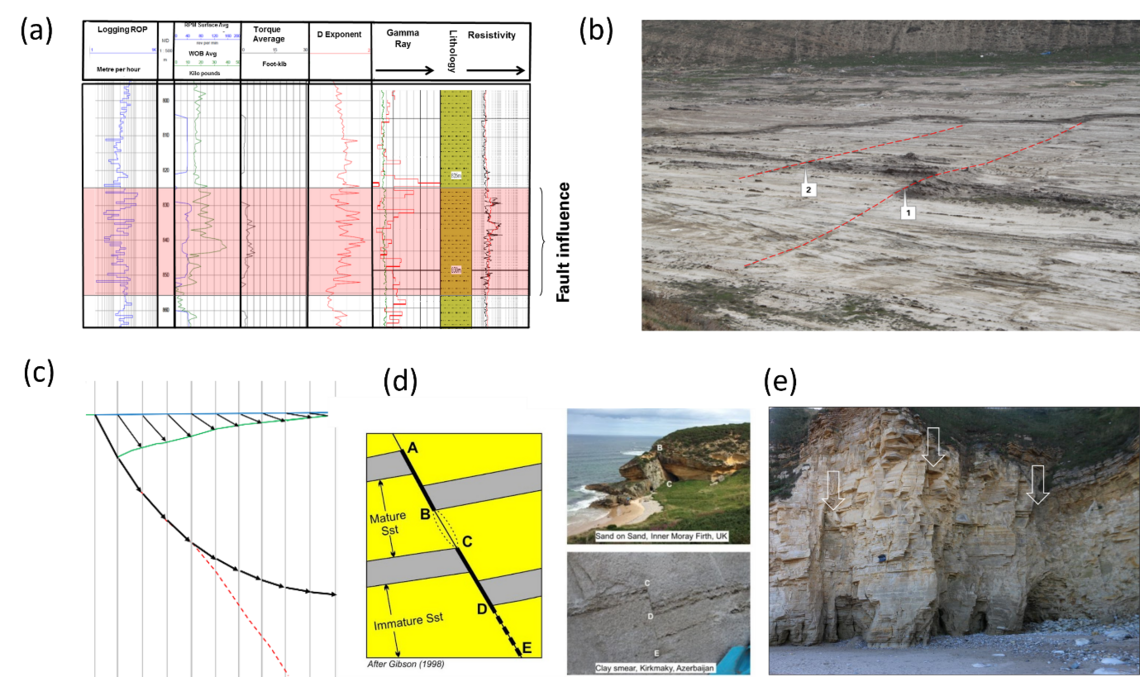BOOKINGS CLOSE AT 17.00 ON 11 JANUARY 2022!
11th January 2022
Event phone:
Event Information
Guest Speaker: Steven Ogilvie – Ogilvie Geoscience Ltd
Topic: Structural Geology in Hydrocarbon Appraisal and Development
Abstract
Structural geology plays a key role in the exploration to development of hydrocarbon reservoirs. This talk focuses upon the value of structural geology in hydrocarbon appraisal and development and the interface with other subjects such as geophysics, biostratigraphy, geomechanics and reservoir engineering. The talk is divided into 4 sections, (i) structural interpretation, (ii) restoration/forward modelling, (iii) fault seal and (iv) fractured reservoirs. Project examples are given where structural geology has reduced risk and uncertainty and added value, throughout appraisal and development.
Structural Interpretation: seismic data is usually the primary dataset for a structural interpretation but well log data should also be utilised as sub-seismic faults commonly impact fluid flow. Examples given to demonstrate the value of well data include, (i) where bedding drag results in quite different communication pathways than prognosed and (ii) where the extent of fault influence has been used to ascertain the appropriate standoff of future wells to a fault in the Clair Field (Fig. 1a), thereby mitigating the risk of wellbore instability.
Regarding seismic data, some guidelines are provided here, for interpretation and QC, such as expected fault dips from Anderson’s model and how to handle fault tips in reservoir models which are often prone to mud invasion as are inherently weak. Also, strike-slip faults are often neglected in a seismic interpretation but can be significant pressure barriers during a field development (Fig 1b).
Restoration: flattening is commonly carried out in seismic software, but kinematic restoration is often seen as the preserve of specialists. Here, we demonstrate some field scale restoration and fault constructions by hand from the North Sea (Fig 1c). These can be carried out by general practitioners and provide a structurally valid interpretation, thereby considerably reducing subsurface uncertainty.
Fault seal: faults are commonly permeability barriers during field development. Often, these are small faults below seismic resolution and because they can juxtapose sand on sand with low clay content, standard algorithms are of limited use in a fault seal prediction (Fig 1d). Here, we present examples from the North Sea where such structures have impacted field development and consider ways to predict their impact using an outcrop example and geo-history.
Fractured Reservoirs: time should be taken to construct conceptual models (Fig 1e) which are of value in making appraisal/development decisions and to feed fit for purpose models. An example is given where various data are integrated to create conceptual models. Stress data is then used to predict conductive direction for development purposes by using measures such as slip tendency.

Figure 1. (a) Fault influence from log data, used to plan future wells to a standoff from the Clair Ridge Fault, that mitigates risk of well bore instability (from Ogilvie et al. 2015, fig. 9), (b) Strike-slip faults (red-dashed lines) on the flanks of an eroded anticline on the floor of Kirkmaky Valley, Azerbaijan; likely barriers in the subsurface due to presence of deformation bands (c) Fault construction (by hand) in the North Sea showing quite a different fault geometry (black arrows) to the seismically interpreted fault (dashed red line), (d) Process fault seal in sandstones (from Ogilvie et al. 2020, fig. 1), (e) Fracture swarms (arrows) in dolomite, Marsden Bay, NE England.
Speaker Biography
Steven Ogilvie – Ogilvie Geoscience Ltd
Steven has 20 years industry experience in hydrocarbon exploration and development across the N Atlantic, Middle East, Africa and Asia. He has expertise in field-scale structural geology and in fractured reservoir characterisation and routinely links these subjects with geomechanics for the appraisal and development of hydrocarbon reservoirs. He has worked for Statoil, BP and Aker-BP and since 2016 through his consultancy Ogilvie Geoscience Ltd.
Venue Information
Venue information
Venue name:
Online
Venue address:
This event will be delivered online.

